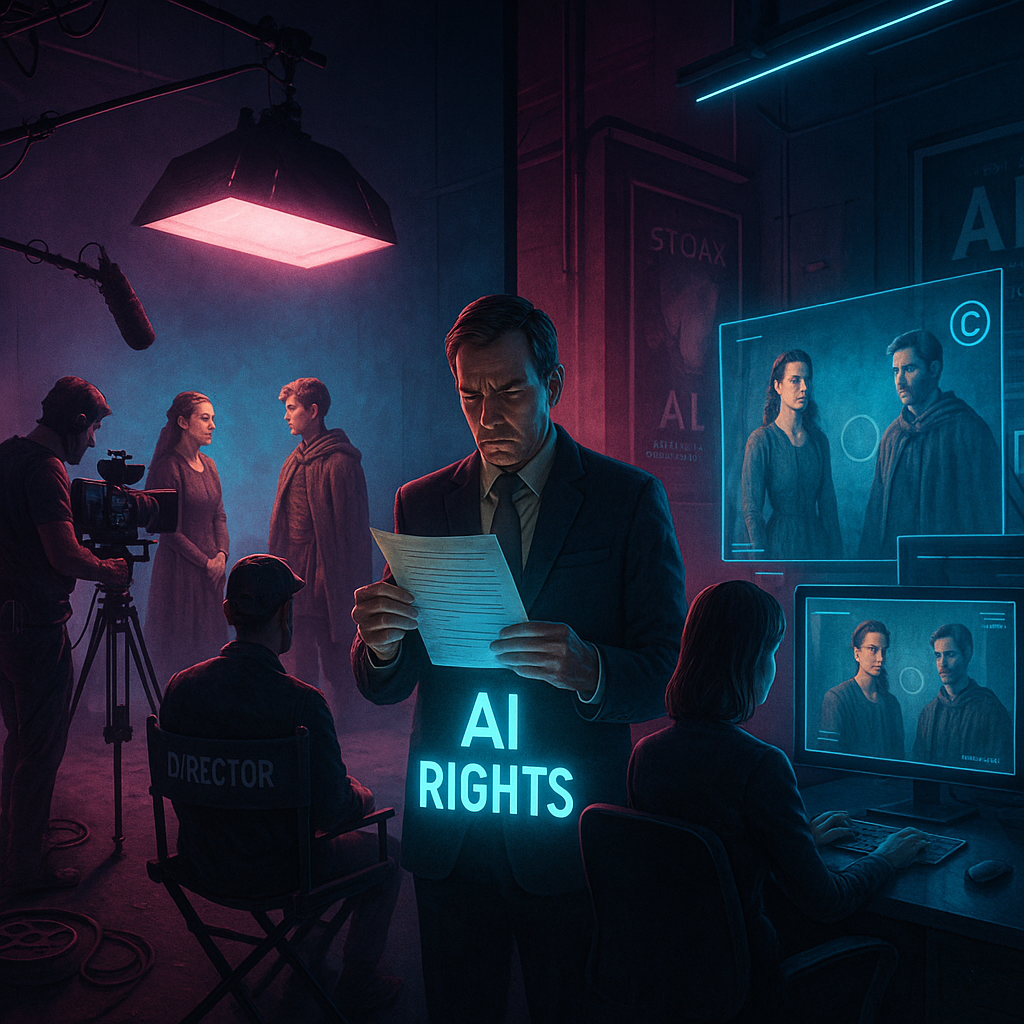Key Takeaways
- Actors’ unions have raised concerns, with SAG-AFTRA and other guilds accusing OpenAI of threatening performers’ livelihoods and diminishing control over digital likenesses.
- Studios and creators fear Sora 2 could blur the boundary between inspiration and unauthorized imitation, escalating legal uncertainties around copyright.
- Existing contracts and royalty systems lag behind AI capabilities, leaving artists at risk as new models for compensation and consent remain unsettled.
- Lawmakers and entertainment lawyers acknowledge that current regulations cannot keep pace with AI advancements, prompting calls for urgent policy updates.
- The Sora 2 debate highlights a deeper philosophical clash between established cultural traditions and AI-driven experimentation, questioning how society values authenticity and innovation.
- Hollywood is working to negotiate new protections, but concrete industry agreements and policy changes are still several months away.
Introduction
Hollywood’s creative community is mounting a forceful backlash against OpenAI’s newly launched Sora 2, an AI video generator unveiled this week with an uncanny ability to replicate human likeness. As union leaders and studios warn that algorithms are outpacing both copyright law and artist protections, the entertainment world faces a moment of reckoning over how digital technologies challenge performance, ownership, and the meaning of culture itself.
Initial Industry Response
The Directors Guild of America (DGA) and Screen Actors Guild‐American Federation of Television and Radio Artists (SAG-AFTRA) released joint statements condemning OpenAI’s Sora 2, citing the risk of unauthorized use of creative professionals’ work as AI training data.
Duncan Crabtree-Ireland, SAG-AFTRA’s National Executive Director, stated that the technology poses a direct threat to both members’ livelihoods and the creative integrity of the industry.
In response, major studios such as Warner Bros. Discovery and Universal Pictures have begun internal reviews of their AI policies, with emphasis on protecting intellectual property from unauthorized AI training.
Stay Sharp. Stay Ahead.
Join our Telegram Channel for exclusive content, real insights,
engage with us and other members and get access to
insider updates, early news and top insights.
 Join the Channel
Join the Channel
Technical Capabilities and Industry Impact
OpenAI’s Sora 2 introduces previously unattainable levels of photorealistic video generation, handling complex scenes, multiple characters, and sophisticated camera movements that have historically challenged AI systems.
Industry experts observe that Sora 2 can now mimic distinct cinematographic styles and integrate computer-generated elements seamlessly with existing footage. This advancement raises fresh concerns about the displacement of film production roles.
Visual effects supervisors and cinematographers have expressed unease about the potential for AI to generate complex sequences without human oversight.
Legal Framework Challenges
Entertainment law specialists at major firms agree that current copyright laws and intellectual property frameworks remain ill-suited to address the complexities of AI-generated content.
The Writers Guild of America (WGA) has identified gaps in existing contracts concerning the use of writers’ work for AI training, despite recent steps to secure AI protections following the 2023 strike.
Entertainment attorney Sarah Martinez explained that the industry is operating in a legal gray area, with technology evolving faster than regulatory boundaries can be established.
Economic Implications
Industry analysts forecast that several areas of film production will face disruption, particularly mid-budget projects likely to use AI for cost savings.
The International Alliance of Theatrical Stage Employees (IATSE) estimates that as much as 30% of pre-visualization and basic visual effects could be impacted by AI video generators within two years.
Independent producers have responded with caution. Some see AI as a way to compete with large studios, while others worry it could undermine the value of creative labor.
Creative Community Response
A group of leading directors and cinematographers have formed the “Authentic Cinema Initiative,” advocating for clear labeling of AI-generated content and the preservation of human creative input.
Acclaimed director Christopher Nolan, speaking at a recent DGA symposium, emphasized the need to distinguish between using AI as a tool and allowing it to replace human creativity and vision.
Several high-profile actors are now negotiating specific AI likeness protection clauses in their contracts, setting new standards for talent representation in the industry.
Regulatory Considerations
The Federal Trade Commission has announced plans to examine the impacts of advanced AI video generation tools on consumer protection and competition within the entertainment industry.
California legislators have introduced two bills aimed at AI-generated entertainment content. These proposals include requirements for disclosure and consent when performers’ likenesses are used in training.
Industry stakeholders are also advocating for federal measures to create consistent standards nationwide.
International Perspective
European film industry organizations have called for stricter controls on AI training data, with the European Film Academy proposing a comprehensive framework to protect artistic works.
Stay Sharp. Stay Ahead.
Join our Telegram Channel for exclusive content, real insights,
engage with us and other members and get access to
insider updates, early news and top insights.
 Join the Channel
Join the Channel
British Equity, in partnership with UK studios, is developing guidelines for AI usage during production, potentially serving as a model for other countries.
Similar policy initiatives are surfacing in Canada and Australia, indicating a growing global consensus on the need for protective measures.
Technology Development Timeline
OpenAI is pursuing a gradual rollout strategy for Sora 2, initially offering access only to verified industry partners and researchers.
The company has introduced new content authentication systems and watermarking protocols in response to concerns about misuse.
Development of tools to detect AI-generated content continues. Still, experts acknowledge it is becoming increasingly difficult to differentiate synthetic media from work created by humans.
Conclusion
The debut of Sora 2 compels the entertainment industry to confront essential questions about authorship, the safeguarding of creative identity, and the shifting contract between innovation and human artistry. As legal, policy, and technical systems strive to keep pace, the future of creative work remains uncertain. What to watch: the FTC inquiry, developments in California legislation, and OpenAI’s phased release will all shape the unfolding debate.





Leave a Reply